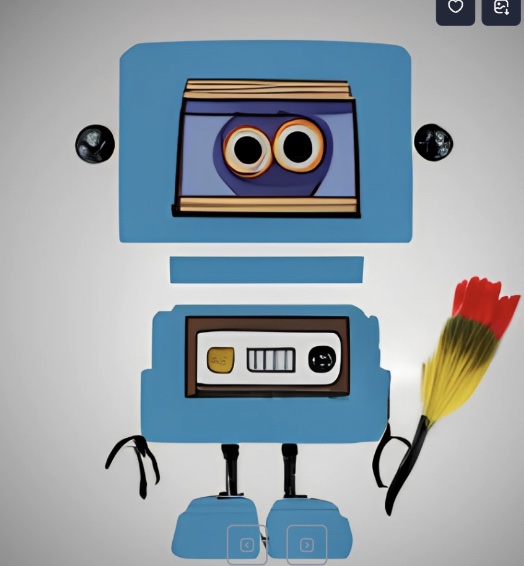Mona Lisa to Macbook: AI’s Devastating Effects on Art
March 27, 2023
Humans have had a fascination with artificial intelligence for hundreds of years. Some of the first pieces of literature to explore the possibilities of AI include Mary Shelley’s famous work Frankenstein (1818) and Samuel Butler’s Erewhon (1872). The 1972 film Metropolis was the first cinematic depiction of artificial intelligence. Today, reality may seem stranger than fiction. If you’ve been anywhere on the internet in the past year, you’ve probably come across the general public’s recent infatuation with Artificial Intelligence and, more specifically, artificially generated art. Recent programs have been made available to pretty much anyone in a widespread fashion previously unheard of. Different AI programs can be used for different purposes, including music, writing, and image generation. Each comes with its own set of complex issues and production processes, but here we’ll get a closer look at image generation, or AI “art”, and its impact on the creative community.
So how exactly does AI art work? Mainstream AI image generators, such as DALL-E 2, Artbreeder, Midjourney, and Stable Diffusion convert words submitted by any user and spin them, almost magically, into sprawling, intricate images in any medium, style, or subject imaginable. They’re fascinating and mysterious, beautiful and terrible, but the data collection methods these programs use to create these images are less than perfect. Image generators create their work by dredging the internet for information, millions and millions of images to feed their gaping maw of algorithms. This information is absorbed as data and informs the choices–pixel by pixel–that will go into the final image. This process leads to issues of copyright, artists’ intellectual property, and the general issue of manufactured creativity; its value, its accessibility, and its place in the larger world of art. “I wouldn’t categorize AI art as art. Art comes from a place of self-expression… it’s a very human thing. Since AI art is someone typing into a computer and the computer spitting out an image, it doesn’t qualify the same way,” says Esther Adebi ‘24, an art student at WFS. “It’s to the point where you can get artificial intelligence to imitate the work of a specific artist and take it over in a way that disrespects and devalues the work of that artist.” Recently, in an extremely controversial story, an artificially generated piece won the blue ribbon for the Colorado State fair. Strong opinions raged on both sides of the spectrum- some critics claimed that there was no artistic value to a generated piece, while others proclaimed that the work put into the prompt makes the work human; others asserted that AI art is a whole other breed of art that deserves praise as much as human creations. “I’m kind of hoping it’ll be a fad that will come and go,” says Ms. Robertson. “I mean, it’s fun. I think it’s like a circus trick. You don’t have to actually work; you just throw out your ideas and something else makes it for you. It’s different from sitting down and working on something for weeks on end. It’s hard for me to really appreciate that as a piece of art.”
So what’s good about it? Many praise AI art and consider it a catapult into the future. Popular arguments include the point that this tech allows everyone to be an artist– people with no artistic experience or talent are able to carry out their visions with seemingly boundless power. Many also argue that valuing human artwork alone is a small-minded point of view. “When we talk about NFTs and stuff, what is value? There are plenty of artworks that get made in all sorts of different ways. Nature makes them or they’re a group project or they are digitally generated,” Ms. Robertson says. “technology is always coming and changing. Figuring out how to embrace that and use it to do something interesting is also something that can happen.” There’s also the value of the unexpected: every time an AI generates an image, it creates a visual experience that most likely never has and never will be seen again. No matter your stance on the issue, the process really is miraculous.
As beautiful and rare, though, is human ingenuity. “The process of making, I think, is really important and losing that can be really frightening. Already, I can see the appreciation of the hand-built going away. Coming up with an idea and a solution, that is part of what gets you to art. It’s valuable.” Says Ms. Robertson. There’s a human touch that goes into creating a piece of art that, many argue, is invaluable, not to mention the morally dubious processes for creating these pieces. Since AI generators are pulling from human creations, aren’t they just regurgitating what others have already done? Is there any merit to the work of people putting in the prompts? Aside from the moral quandaries, there’s also the substantial issue of intellectual property. Harvesting data from images that artists have put online to use in creating a new piece is problematic in itself, and getting money for it is even worse. “When it comes to people selling AI images, that’s where things get morally dubious. You’re actually taking money from people that could be going to actual artists,” says Adebi. Purchasing art from real people who’ve made it can be a win-win situation; you’ll get artwork with authentic humanity and you’ll be giving money to artists who’ve worked hard from it.
New technology is always met with apprehension or even downright opposition. Art is so subjective to begin with that trying to figure out its value separate from its connection to humanity makes it even trickier to parse out. There’s a lot to consider, and a lot to be excited about. Keep an open mind, and stay curious! We can’t guess where artificial creativity will take us.































